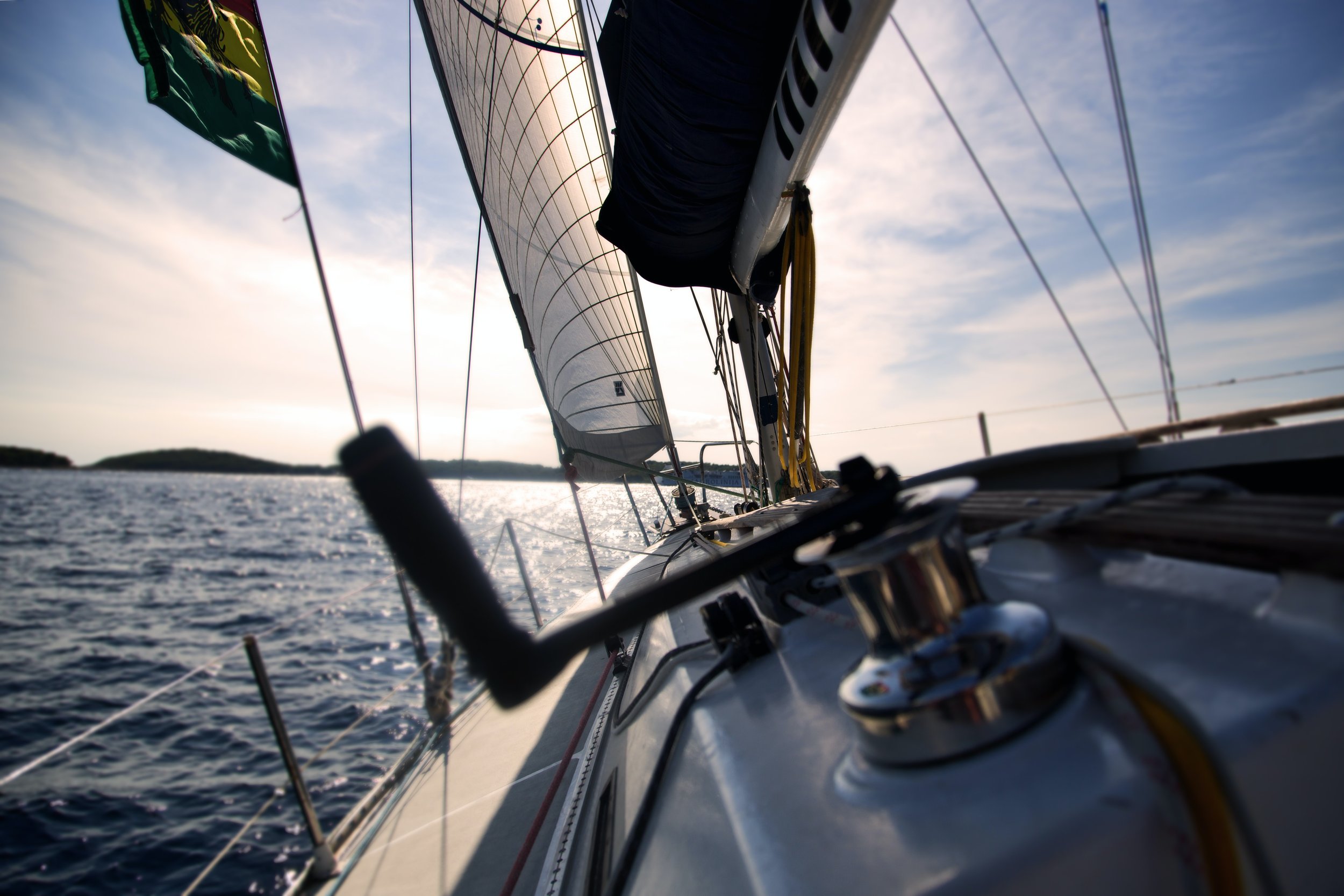
THE INDUSTRY
Question
Understand
Change.
The term marine and maritime are often used interchangeably, both by industry insiders and by external observers. As a result, this means that anything connected with the sea is encompassed by this definition, from Oil and Gas exploration, offshore wind, shipping, boat building and the leisure and tourism industry. Despite this, common challenges do exist and are far bigger than any one industry, for example biofouling or climate change neither of which could be addressed by one industry of company.
While the breadth of the maritime industry is both its strength and weakness, unless the industry can utilise this breadth, it is going to continue to face these common challenges and these issues will have their impact felt across this £10 billion industry.
The first exposure that many in the UK have to the maritime industry is the sport of sailing, from dinghies in inland reservoirs, driving powerboats, through to yachts sailing in some of the busiest locations for ship movements globally. This area of the industry is one which is often termed the “marine” industry or sometimes “leisure marine” and forms the underpinning of many people’s exposure to the wider maritime industry.
This area is where British boating focuses our efforts, as starting at the beginning of the industry recruitment pathway means our actions can radiate out beyond our own impact, like the flap of a butterfly’s wing. The marine industry faces challenges which are representative of the wider maritime industry, with the negative impacts of climate change, biofouling, the recruitment of new participants and the retention of existing participants, alongside COVID-19 and Brexit. Therefore, our actions to address these challenges will be applicable across the wider maritime industry.
What are the challenges facing the industry?
Despite the industry facing significant challenges, approximately 4 million people took part in boating in 2017 (Gibson, 2018), the marine leisure industry has been valued at £2.8 billion in 2018 (Cebr, 2019), out of an estimated 5,000 (UK Maritime Industries Alliance, 2021). The marine industry is built upon composites and aerofoil technologies which also underpin the aeronautics, automotive and wider chemical industries, but this has been systematically failed to be communicated.
These are some of the most innovative technologies globally currently (Singh et al. 2021), therefore; the lack of growth and profitability should not be the case and is a challenge that we aim to address.

Our mission is to increase the participation in sailing and marine industry along with making sure that we are diverse, to push beyond the stagnant growth that hamstrung the industry prior to the pandemic.
How do we get there?
To address these systemic failings, we propose the development of an organisation we are calling “British Boating”, whose sole purpose is to market, showcase and disseminate good practises within the marine industry, with a focus upon the leisure market and boating in particular. This campaign will target promoting the image of boating, not just as a sporting activity, but a career and source of innovation. We will aim to increase participation across the board within all sectors, including dramatically improving the current lack of diversity. This will be alongside actions to increase apprenticeships, college available degrees and other career pathways. We firmly believe that the potential of the marine industry and boating is not being realised through incoherent communication, which we intend to address.
By setting goals to be over a 10-year timescale, we are able to focus upon ambitious targets for improving the industry. We believe these are achievable; however, to be able to get there we are going to need to build strong industry links with all the leading governing bodies and heads in the industry. This will allow us to build a strong network and support base channelling increased engagement into the right area of the industry or leisure market.

The marine industry grew 2% globally and was valued at €110 billion, with 65,000 companies and directly employing 600,000 people.
The last report by the Marine Industries Leadership Council covering the development of the industry was written ten years ago (Industries Leadership Council, 2011) and the industry was only mentioned once in the recent review of the manufacturing and materials review by Innovate UK, in the context of marine litter.
(Innovate UK, 2021)

7000 dinghies produced annually, 184,000 owned in 2018 and 1,000,000 globally.
100 yachts are built in the UK annually and 31000 owned in the UK in 2018, while there were 1.5 million globally.
Engagement in waterspouts and sailing
According to the 2018 water sports participation survey 3.9 million people engaged in sailing that year. This varied annually, with the fewest people participating in 2010 (2.752 million), while participation then rose to 3.955 million in 2017 and remained approximately stable. Unfortunately, we cannot measure the number of participants since 2018, as the company producing these surveys has since been dissolved. Furthermore, their data collection protocol has never been released, meaning it is impossible to corroborate this data, or reconcile them with other surveys, such as the estimate of 1.49 million people sailing in 2021 (P 2021).
If we take the number of sailing club members to be a proxy for the number of people participating, then the decline in club membership from 275,300 in 2017, to 258,500 in 2020 (the last year we have data for), suggests that there are approximately 3.572 million people who participated in sailing in 2020. The lack of data collection in this area is a continuing area of concern for British Boating, as without consistent, comprehensive data collection, it is impossible to truly understand the challenges facing the sector.

The industry is currently 2% female.
Zeymarine 2018
3.9m people participated in boating in 2017
Arkenford., 2018
